Our second day of touring in Iceland was a two-part day. The morning was spent sightseeing in Reykjavik; the afternoon was . . . well, I’ll get to that.
Before I go on, I forgot to mention in yesterday’s post that our guide sounds like he’s from Minnesota. He has a northern accent in his English and his favorite expression is jajaja, as in “We should stop for lunch.” “Jajaja.” Or “That’s an amazing sight.” “Jajaja.” Just say ja three times as quickly as you can: jajaja. He says it so often that most of us on the tour are saying jajaja to each other and smiling when we do so. He said he is often critiqued for telling stories that are too long, but we all found them interesting. Stories about gremlins, trolls, etc. are good for the long winter nights in Iceland (or for amusing passengers on tour buses), so there is an abundance of these tales. Sometimes he goes off-track a little and uses his second-favorite expression: “. . . but that’s another story.”
As a Lutheran, the closest I’ve come to Lutheranism as a way of life was growing up in the upper Midwest where the German and Scandinavian populations make Lutheran churches a familiar sight. In northern Europe, however, the Reformation had a profound impact, and in most of the countries we visited on this trip–including Iceland–Lutheranism is the state religion. As a result, the Lutheran churches are huge and many are converted (not really a pun) Roman Catholic churches. In fact, they are often referred to as simply the “Protestant” church with no further denotation, as opposed to the Roman Catholic church.
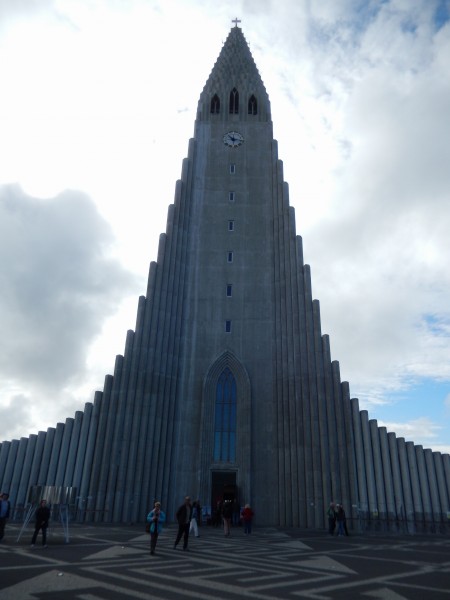
The largest Lutheran church in Reykjavik.
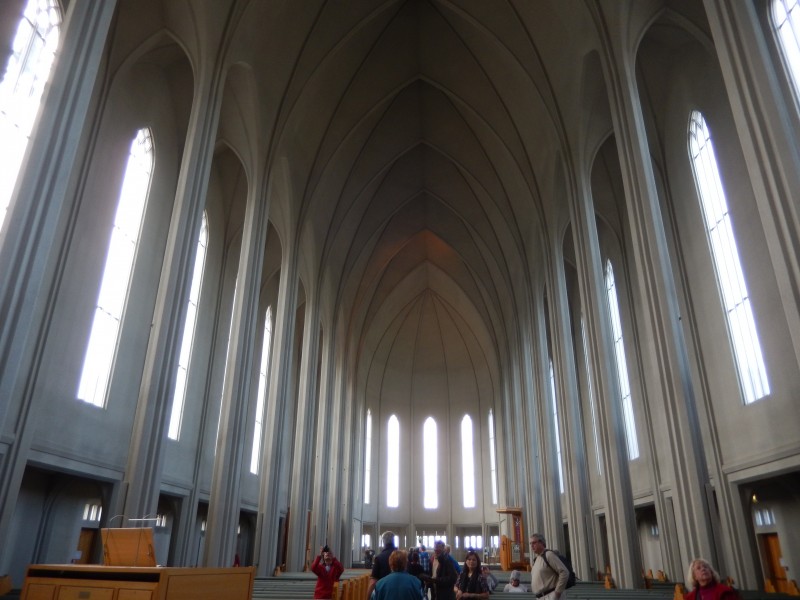
The sanctuary of the church. At first glance, it appears stark, but there are many beautiful sculptures and designs throughout the building.
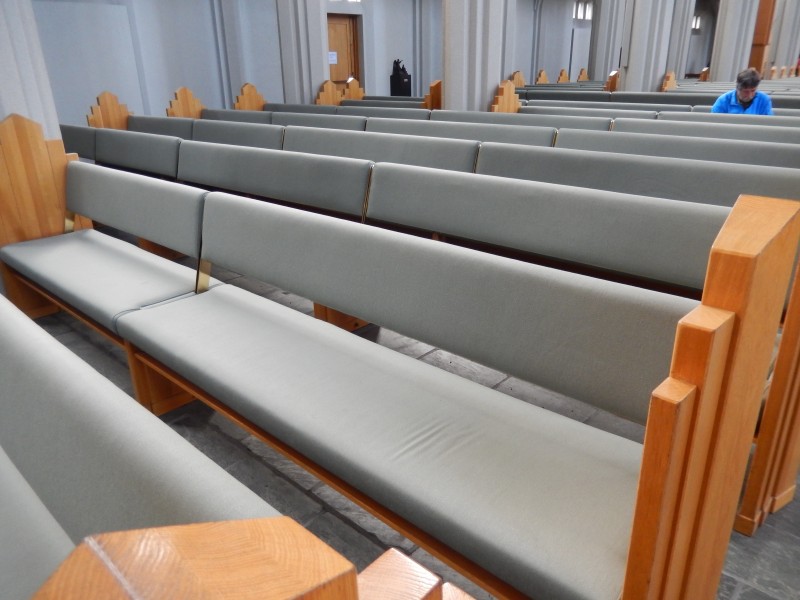
The pulpit is in the front; the huge pipe organ is in the back. The seat backs on the pews can be flipped to allow the congregation to face the altar for worship or the organ for concerts.
Reykjavik made the news in 1986 when President Reagan and Premier Gorbachev met there. We stopped at the house where the meetings were held.
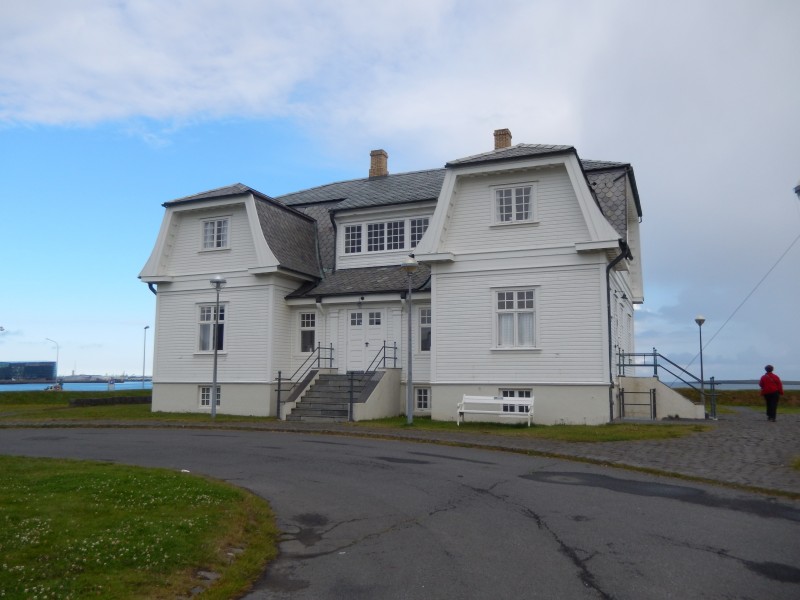
The Reagan-Gorbachev meetings in this house were the beginning of the end of the Cold War.
As we were driving around the city, we saw this person on a bicycle.

How many bags can a bag lady bike?
We went to the Pearl (so named because of it’s dome-shaped roof) and had the opportunity to see Reykjavik from its highest point. It’s a very pretty city and we lucked out–it was a sunny day.

One view of the city. See the Lutheran Church? You can’t miss it!
We had a chance to see an old restored farm just outside the city. It was very interesting to go into the buildings. Many have sod roofs and the main house is attached to the stable with a tunnel-like hallway so that stock can be tended in bad winter weather. The rooms are very small, and the furnishings are very cozy. Small also means easier to heat in the winter.

Some of the houses and the attached stable.

The parlor.
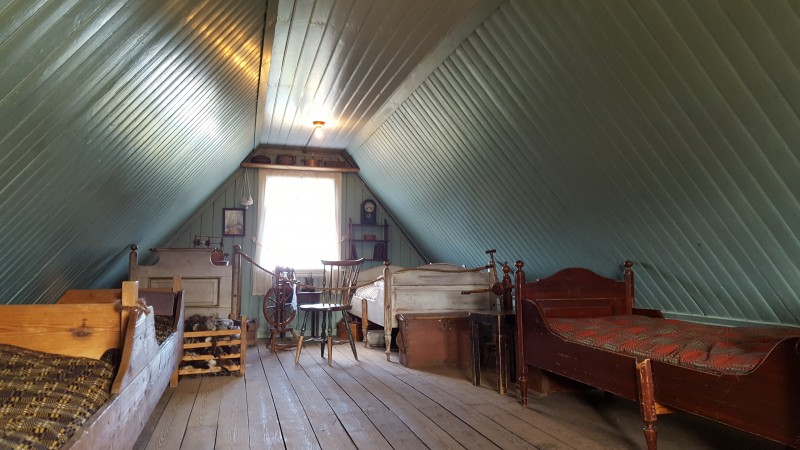
The upstairs bedroom for the children.
The farm had a small church, complete with a model ship. The church’s capacity was about twenty worshippers. Men sat on the right, women on the left, and criminals (if any) in the front, facing the congregation. One man from our group asked about the “fence” around the altar. He must not be Lutheran or he’d know it was the communion rail. The kneeling space is pretty minimal.
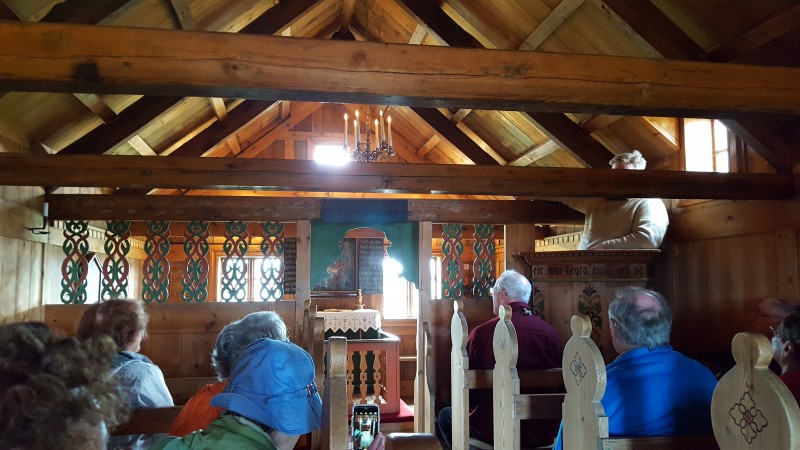
I’m not sure all the parishioners could see the pastor’s face while he was in the pulpit, especially since this guide was quite short and his head is above the crossbeams.
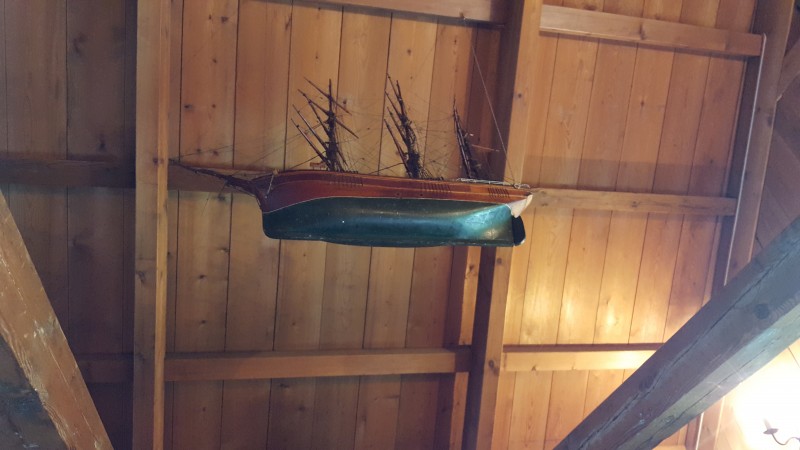
The model ship in the church.
And then it was time for a lunch break and the afternoon treat: the Blue Lagoon. I had never heard of the Blue Lagoon, but it is apparently a defining experience of visiting Iceland, as in “Did you swim in the Blue Lagoon while you were there?” It was about a 45-minute drive from Reykjavik and, on the way, our guide pointed out that we were passing the Swedish embassy: IKEA. (Laughter from the group.)
The Blue Lagoon is on a peninsula of Iceland. Of course the ground is lava, so it is porous. There is a salty hot spring 300 meters below the surface of the Blue Lagoon and it is believed that regular use of these lagoon waters promotes youth, health, and longevity. There is even a special line of skin products to enhance your experience. My enhanced experience included the first “gang” changing room I’ve used since I graduated from high school. When in Reykjavik, . . .
Ted was skeptical, but took the plunge (literally) and we had about two hours to enjoy the warm (99°-106°) water. Afterward, Ted agreed that it had been a very good experience and very relaxing. Not to mention that we both look younger now. Unfortunately, we couldn’t take pictures in the actual Blue Lagoon because it would be stupid to bring a camera into a swimming area and there was no place to leave it once you exited the locker room. As a result, I only have a picture of the sign at the entrance. I can’t really describe the experience–maybe that’s the magic of the special waters–but it was a wonderful afternoon and a highlight of our Iceland visit.
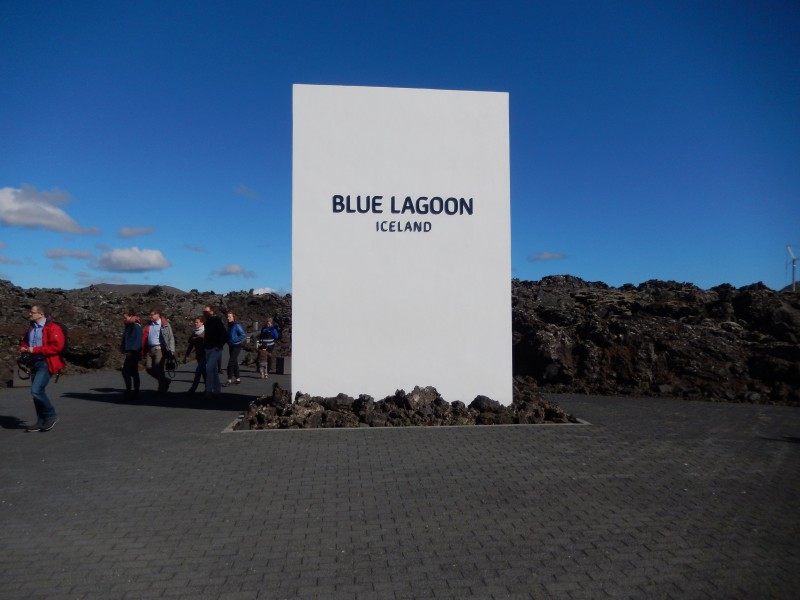
This one is self-explanatory.
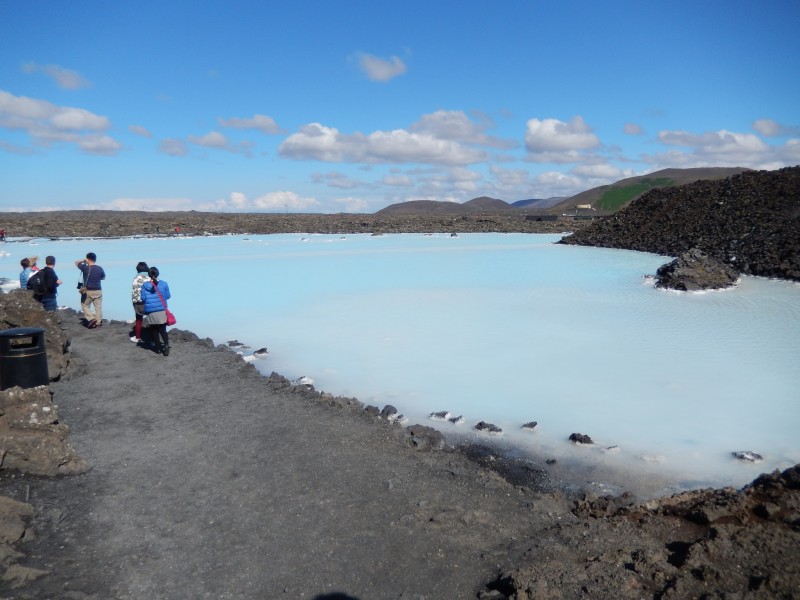
Not the actual Blue Lagoon, but a pool just outside the lagoon with water just like that in the lagoon.
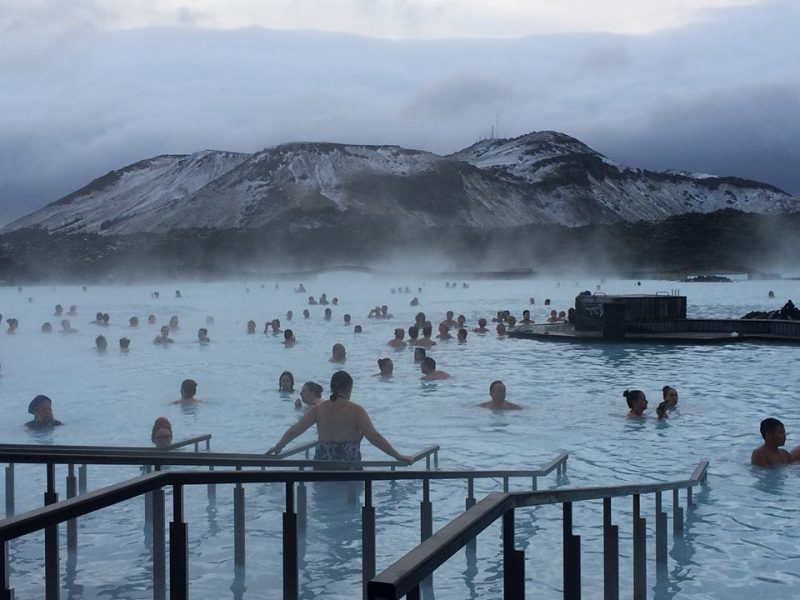
My friend, Elaine, took this picture in the Blue Lagoon in November. It was 30 degrees and windy. She had a warm hat on her head.
Finally, as we were walking in downtown Reykjavik on the last day of our vacation, I saw a sign at a bus stop that fit our trip. There is a brand name of sportswear in northern Europe called 66° North (the rounded Arctic Circle latitude). The company has a variety of advertising posters, but this one perfectly described the cool weather (mostly mid-50s to mid-60s) we experienced as we traveled, wearing one, two, or even three layers of jackets, in countries at approximately the latitude of Anchorage to Fairbanks, Alaska.
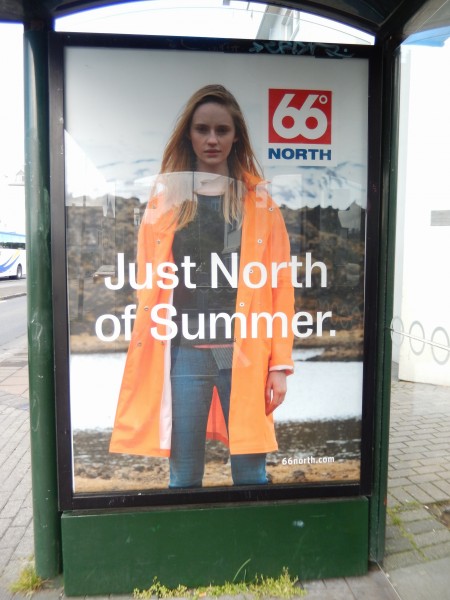
Where we spent our vacation.